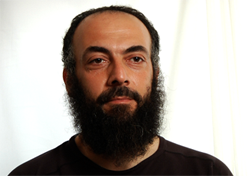Witness to Guantánamo

Guantánamo Witnesses Speak
Years of challenges to the offshore torture facility at Guantánamo Bay, Cuba, have failed to overcome U.S. government intransigence, and no shutdown of the detention camp as promised by President Barack Obama appears likely. Established in 2002 by the administration of George W. Bush and maintained under Obama, Guantánamo’s sordid record includes the seizure and detention of 779 men, internment of children, six known detainee suicides, 23 attempted suicides, and documented use of torture, leading Amnesty Inter- national to label the place “a human rights scandal.”
New work undertaken by the Witness to Guantánamo (W2G) Project relies on oral history to preserve the stories, if not the lives, of Guantánamo detainees. Oral history is the original and probably most reliable form of record keeping. Its primary method is to collect the testimonies of people who actually witnessed events firsthand.
Leading W2G is Peter Jan Honigsberg, a professor at the University of San Francisco School of Law. Honigsberg began regularly teaching a course on the War on Terror in 2002. He visited Guantánamo in 2007 and is the author of Our Nation Unhinged: The Human Consequences of the War on Terror (University of California Press, 2009).
The project aims to document human rights abuses and rule of law violations with an archive “to educate the public and mobilize pressure to hold U.S. government officials and private actors accountable.” According to its website, W2G has interviewed 97 people in 14 countries. The in-depth, filmed interviews with former detainees, prison guards, chaplains, medical personnel, prosecutors, habeas attorneys, high-level government and military officials, FBI agents, interrogators, interpreters, and detainees’ family members will be available in English and transcribed “to reach the broadest audience possible.”
Already available on the website are brief video clips and tran-scriptions, as indications of what will come from this ambitious and courageous project. W2G’s artistic director and cinematographer is Johnny Symons, who won awards for documentaries about “don’t ask, don’t tell” and reconciliation in South Africa. Symons teaches documentary filmmaking at Stanford University and the Art Institute of California-San Francisco.
The project is partnered with Amnesty International, and its avowed goals include: “to support qualitative and quantitative social science research; select footage for documentary and other media-related projects; create educational units on Guantánamo for elementary through graduate school students; and inform and educate the public. The diverse potential uses of the archive will be limited only by the imagination.”
The spoken word is a treasury of human activity. Oral traditions preceded literature. By the fifth century BC, Herodotus was said to rely on oral accounts for his historical writings.
Oral histories in the modern era flourished anew after World War II, and the methodology used by W2G credits director Stephen Spielberg for his filmed accounts of Holocaust survivors. It is a cousin of journalism, in the best of circumstances. Historians, like journalists, are expected to develop good ears; listening is their best tool.
As a journalist with a penchant for oral history projects, I worked to produce three publications using oral histories. The subjects were migrant farm worker labor organizing; African Americans in Madison, Wisconsin; and war veterans who became peace activists.
Those projects taught me, firstly, that oral history is labor-intensive to an extreme. It is also demanding creatively and psychologically. Sitting for hours with a tape recorder across a table from someone demands that an interpersonal relationship be established.
While working on oral history projects, I was fortunate to meet Howard Zinn. We lived far apart, so most of our communications were written, his often ending with: “In defiance of the madness, Howard.” I named my collection of edited oral histories with 20 elders of the African American community The People’s Stories of South Madison. The title was an unabashed reference to Zinn’s epic A People’s History of the United States.
Zinn was steadfast in his struggle for truth and justice. His constant reminder to act “in defiance of the madness” underpins the Witness to Guantánamo Project. The U.S. government scorning international law, violating human rights, and torturing people in the secret chambers of Guantánamo is the “madness” being documented by W2G. As W2G develops the oral histories, first-hand detainee accounts will shine a light into a dark corner of U.S. policy.
